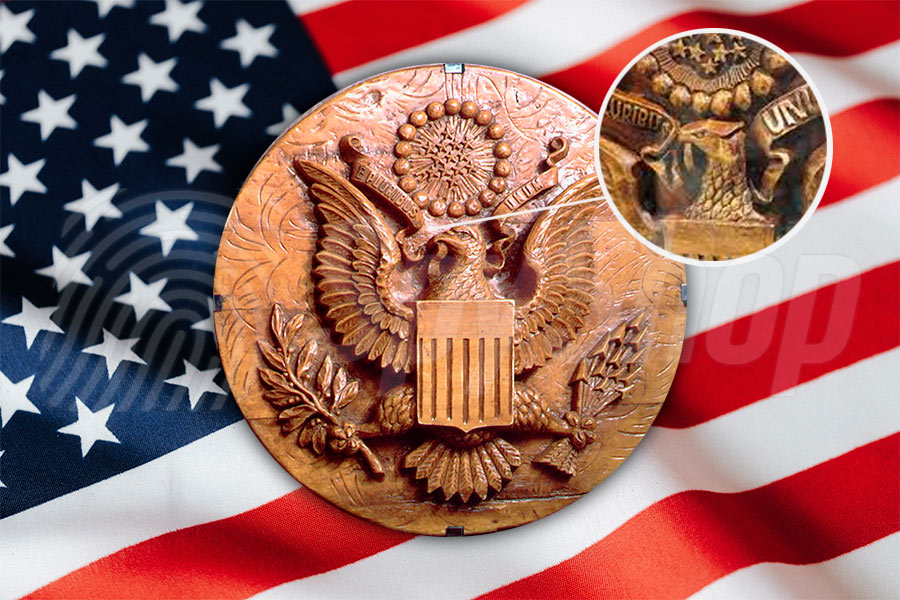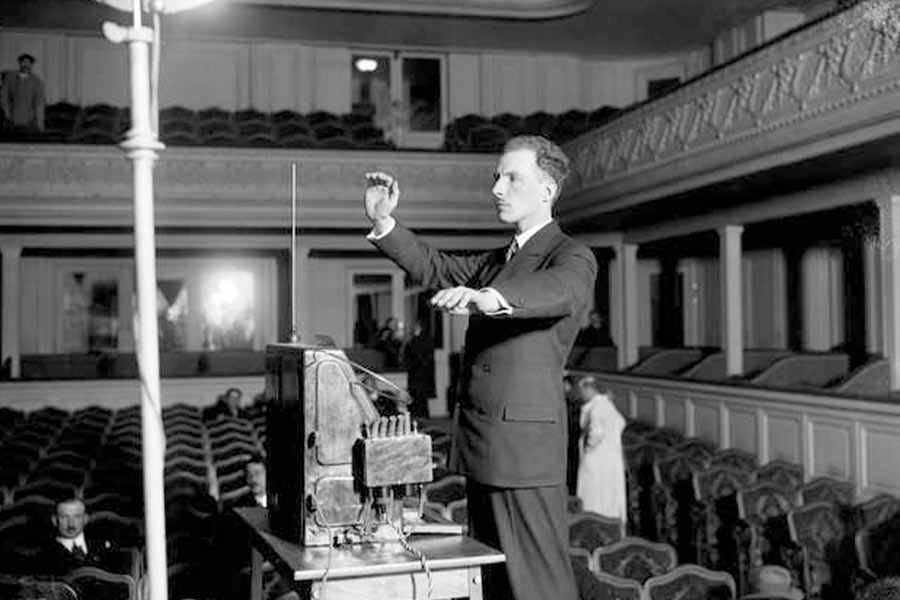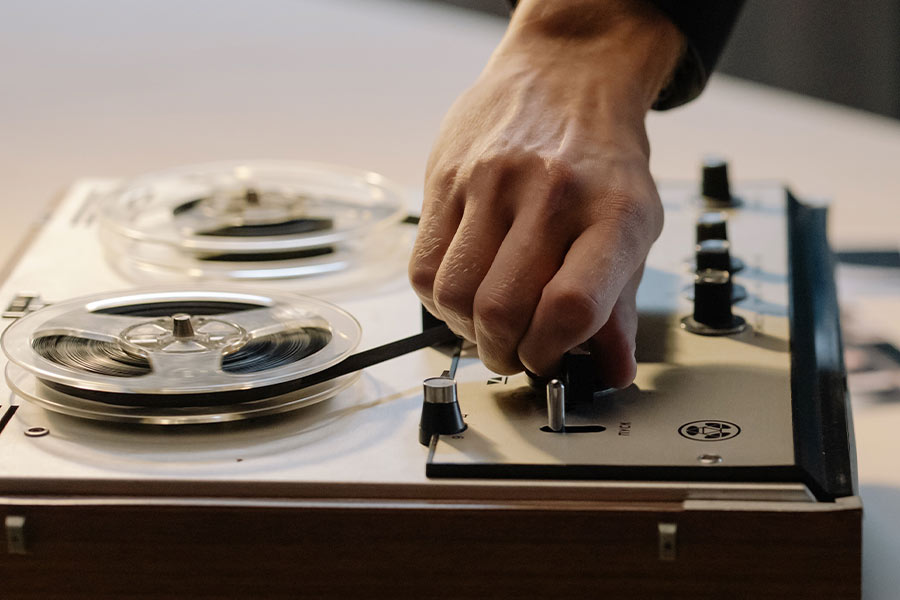How is it possible that an inconspicuous gift from children – a token of appreciation and a promise to continue the USSR’s friendship with the US – was one of the most effective secret surveillance devices ever created? Discover the secret of Soviet intelligence and how the eavesdropping bug that intercepted government secrets at the American embassy worked for as long as 7 years!
Children of political youth at the service of the KGB, or how the Russians installed a wiretap in the American embassy
On August 4, 1945, a group of youths from the All-Union Pioneer Organization named after V. I. Lenin, a Soviet political organization, presented a hand-carved replica of the Great Seal to US Ambassador Averell Harriman as a gift. The wooden bas-relief so appealed to the consul that it immediately hung in his office, in the Moscow residence of the so-called Spaso House.
The Great Seal of the United States (from Great Seal of the United States) depicts an American bald eagle holding 13 arrows and an olive branch with 13 leaves in its talons. On its chest sits a shield in the colors of the U.S. flag, and above its head are 13 stars.
The Great Seal is an official state symbol. It signs government documents (confirms their authenticity).

However, the gift, which was ostensibly intended as a symbol of victory over the Third Reich, cooperation and solidarity after World War II, turned out to be a ruse by Soviet intelligence. What’s more, the idea was so successful that it bugged two more ambassadors. The bug was not revealed until seven years later. A British radio operator heard the conversations of American officials completely by accident.
Electronic music genius in a Gulag laboratory

Lev Termen is responsible for the success of the miniature eavesdropping device at the Great Seal. The Soviet physicist, who was awarded the Stalin Prize for Outstanding Achievements, was the inventor of pioneering spy technology, including the Buran system – the forerunner of modern laser microphones – and also worked with Andrei Tupolev and Sergei Korolov on remote-controlled aircraft and a ship tracking system.
Interestingly, Lev Termen began by constructing innovative musical devices. He patented a cello without strings and a thermin, one of the first instruments that produced sound using electric current. He even embarked on a world tour with them after gaining Soviet authority. It wasn’t until he returned to the country that he was sent to the Gulag’s secret “sharashka” lab, where he began working for the KGB.
"The Thing" - a precursor to RFID technology

Termen’s bug was smaller than a pen. It consisted of a copper cylinder (resonant cavity) and a microphone. It was powered and activated by a strong radio signal (an RF beam of the appropriate frequency) from outside, probably from the NKVD’s secret apartment, which was located on the opposite side of the street. The sound fell through tiny holes in the wood under the eagle’s beak straight into the bug’s membrane.
What enabled Soviet intelligence to carry out eavesdropping for so many years was the bug’s wireless operation. It didn’t need batteries, magnetic fields or external power sources, in other words, nothing that could expose it.
This kind of operation was new to the Americans. The best Western inventors couldn’t name it and referred to it as “The Thing” and “The Great Seal Bug”. For they saw a metal wire, a membrane and an empty chamber, but lacked a battery or any technology. The CIA tried to create a copy of the device (the “Comfortable Chair” project). However, they failed to achieve satisfactory signal quality. The meaning of the design was discovered only decades later by the developers of RFID technology, who used it to create a system of remote identification via radio waves.
Mutual espionage and confrontation

The first wiretapping scandal after World War II probably went without much of an echo. American counterintelligence, out of shame and fear of public judgment, even hoped for it. In 1960, the Russians thwarted its plans. They themselves, though not directly, led to publicized events. After they shot down a U.S. Lockheed U-2 airliner while conducting aerial reconnaissance over the USSR, Soviet authorities called a UN Security Council meeting to accuse the U.S. of espionage. In a counterattack, US diplomats did the same, presenting a Soviet bug in a sculpture as evidence.
Modern wireless wiretaps

Need an eavesdropping device as effective as the Termens bug? Detective Store offers advanced surveillance devices that work just as discreetly – they remain undetected throughout their lifetime. What’s more, you don’t have to sit in the building facing the controlled room like a KGB agent – you can access the recorded audio from anywhere in the world.
The GSM-235 wireless eavesdropping bug impresses with its long operating time – it works for up to 140 days. Two sensitive microphones collect sounds at a range of 5-6 meters. Thanks to its reliance on GSM technology, you can listen in anywhere and anytime – just make a call with a SIM card previously placed in the device.
If, on the other hand, you’re looking for a hidden eavesdropping device that offers unlimited operation time, yet doesn’t arouse any suspicion, check out the DYK-L2 WiFi recorder hidden in a surge strip. The device does not differ in appearance and functionality from traditional extension cords. It records conversations from a distance of 5 meters. Thanks to advanced audio compression algorithms – they are noise-free.
This may interest you: Mounting spy devices in your object
The Thing/The Great Seal Bug - FAQ
Learn the answers to the most frequently asked questions!
Who invented “The Thing” eavesdropping bug?
The hidden wireless eavesdropping bug in the form of a wooden replica of the Great Seal of the United States, or “The Thing,” is the invention of Soviet physicist Lev Termen.
How did the hidden bug of “The Thing” work?
The hidden bug “The Thing” was constructed of a membrane, resonator and unipolar antenna. It was activated by a beam of radio waves at the right frequency, so it did not need a power source to operate.
Why is the covert eavesdropper “The Thing” called a Trojan horse?
Soviet intelligence used a method developed by the ancient Greeks. A delightful gift of a hand-carved replica of the Great Seal turned out to be a ruse.











Leave a Reply